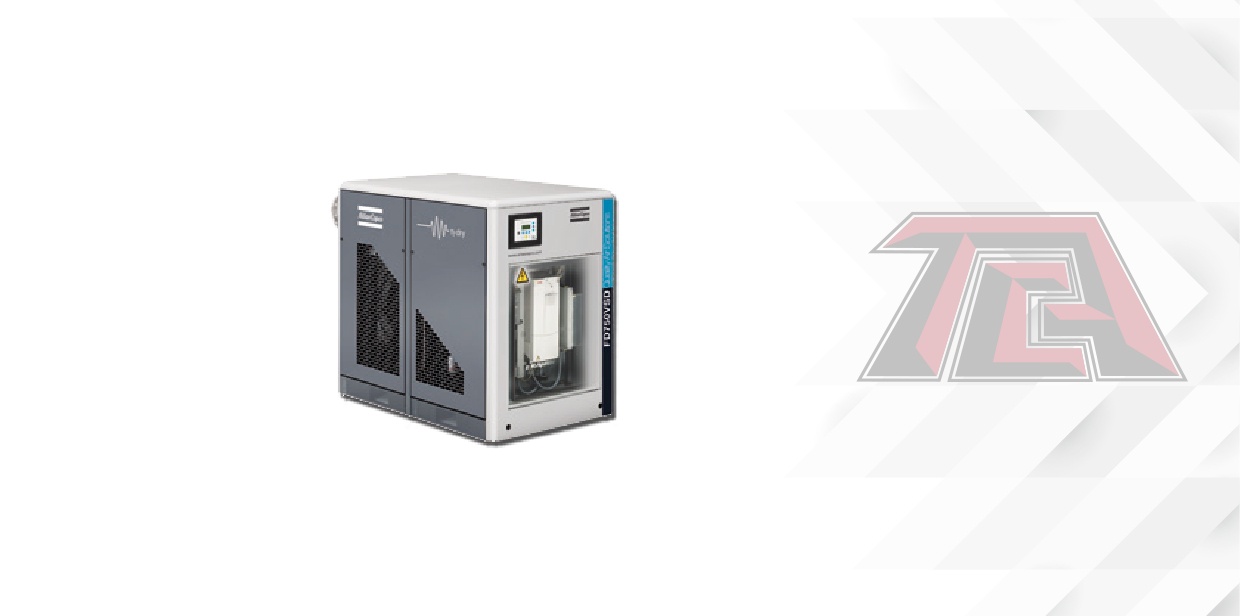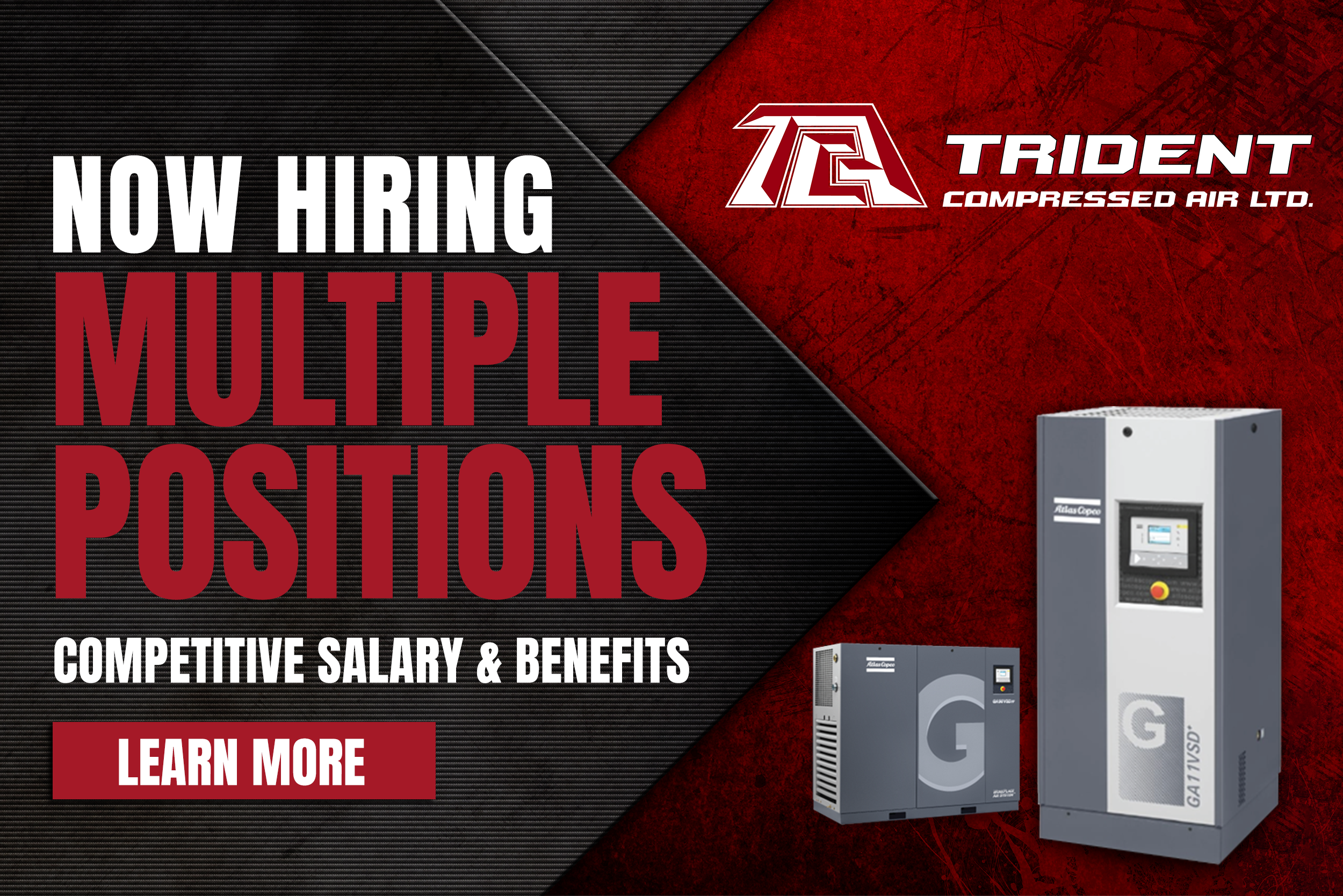The Four Different Types of Air Dryers

Besides water, electricity, and natural gas, most industries rely on compressed air, making it a critical fourth utility in several manufacturing setups. Essentially, if you have a compressed air system on your production line, chances are that you will also need to invest in suitable compressed air dryers.
The technical experts at Trident Compressed Air LTD. offer insights into the four different types of compressed air dryers that may find a place in your production facility.
Learn Which Compressed Air Dryer is Relevant for Your Business
In pneumatic systems, the process of compressing air leads to water vapour, which causes condensation due to the subsequent cooling downstream. Even the slightest amount of moisture in the system could cause corrosion and bacterial growth, which can make your processes sluggish or lead to the breakdown of equipment. The right air dryer will help keep moisture out and extend the life of your compressors.
Here’s an overview of the four different types of air dryers to help you select the one that is right for your setup:
1. Refrigerated Air Dryers: They cool the compressed air to cause condensation and collect and drain the liquid water through an internal moisture separator, leaving the compressed air completely dry.
Refrigerated dryers come in two types:
- Cycling Refrigerated Dryers: Feature intermittent runs with need-based power ups that economize electricity consumption and costs.
- Non-cycling Refrigerated Dryers: Run continuously and maintain consistent dew points.
Due to their inexpensive setup, ease of maintenance, and resistance to airborne particles, refrigerated dryers are an excellent choice for several different industries. However, since they generate air pressure dew points between 35°F and 40°F, refrigerated dryers may not be suitable for processes that require extremely dry air, or for circuits that see sub-freezing temperatures.
2. Desiccant Air Dryers: These dryers use desiccant agents to dry the compressed air in a process called adsorption (the moisture attaches itself to the desiccant without dissolving). To avoid desiccant saturation, they also include a regeneration process that ejects the accumulated moisture from the dryer. Desiccant dryers feature two variants:
- Heated Desiccant Dryers: They redirect 8% of the dried air through a heater in the circuit to remove moisture from the desiccant before being discharged.
- Heatless Desiccant Dryers: They divert 15% of the dried air to the regenerative tower, extract water off the desiccant, and subsequently discharge the moist air.
Desiccant air dryers maintain consistent dew points of -40°F or less. When paired with a regenerative desiccant at the point of use, they can reach dew points of -100°F. While these dryers are employable in remote or hazardous environments, their initial cost can be high, and the desiccant bed needs replacement every three to five years.
3. Chemical Air Dryers: Instead of a desiccant bed, the compressed air passes over a bed of moisture-absorbing chemicals, such as calcium chloride, sodium, or lithium. These dryers require a high-quality filtration system to dispose of the chemicals that attract and collect the moisture. Chemical dryers are inexpensive to install, easy to operate, and require minimal monitoring. However, their performance depends on the efficiency of the filtration systems. Additionally, disposal of saturated chemicals may be expensive or complicated, depending on the location and nature of your business.
4. Membrane Air Dryers: Used as dehumidifiers or for applications that need gas separation, membrane air dryers direct the compressed air across bundles of semi-permeable membrane fibres. These dryers are ideal for single points-of-use or smaller projects. While they are easy to operate and maintain and do not require electricity, they need a frequent change in the prefilter for effective functioning.
Choose the Right Air Dryer and Keep Moisture Out
From the purpose, frequency, and environment for use of compressed air, to the desired air temperature and pressure dew point, there may be several factors impacting your choice of an air dryer. At Trident Compressed Air, we have over 30 years of experience in providing world-class compressed air solutions, along with unparalleled customer support. Explore the 4 different types of air dryers, and speak to our experts to understand which one best meets your business requirements and budget. We also create tailor-made solutions and packages to meet the exact needs of your facility. Whether you need to install a new dryer system or address repairs or maintenance issues, our prompt on-call crew will help you get back on track with minimal downtime or disruption to your production line.
For more information on compressed air dryers, contact our office at (519) 737-9905 or fill out our online form. Our service department is on call 24 hours a day and we are eager to help answer any questions or concerns you may have about your equipment.

